13 Top Places to Visit in Spiti Valley: A Traveler’s Guide
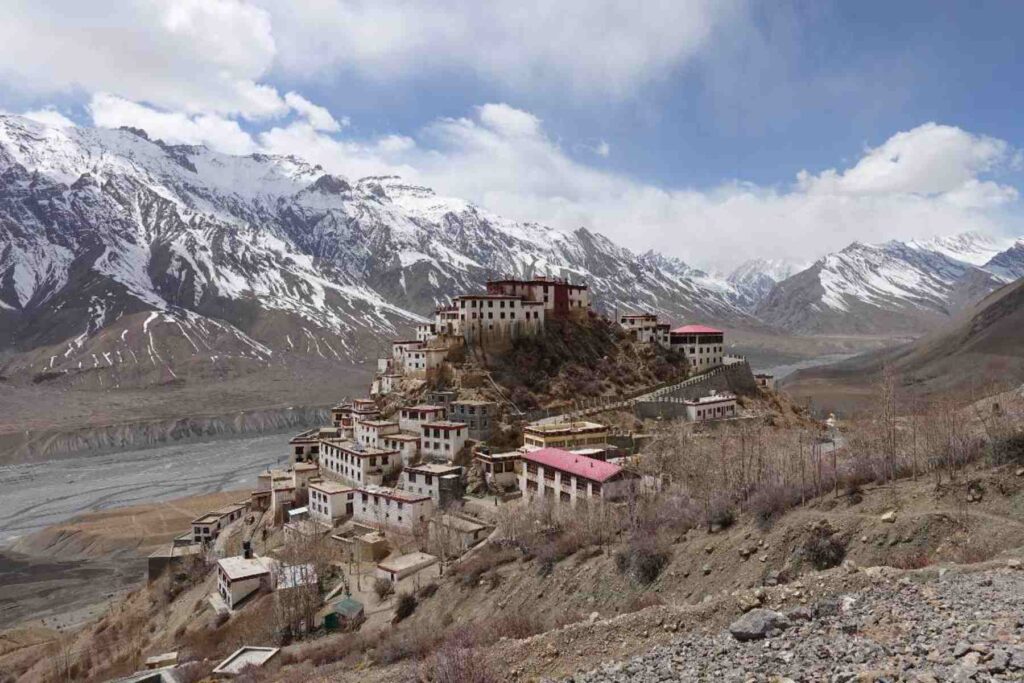
Like two sides of a coin, Lahaul and Spiti are one unit in the present day but have undergone multifaceted changes in the past. Before the second half of the seventeenth century, Lahaul would frequently shift ownership between the rulers of Kulu and Ladakh.
Once the Ladakh Kingdom collapsed, Lahaul was seized by one of Kulu’s chiefs. Ranjit Singh became the ruler of Kulu in 1840. He ruled the region until it transferred to British control in 1846. The British governed Lahaul under Kulu’s jurisdiction up until 1940. The area was then ruled by local jagirdars/thakurs. In this TripzyGo guide, you will explore the best places to visit in Spiti Valley.
Tourist Places in Spiti
For some, Spiti Valley is an adventure of a lifetime. Because of its remote location and diverse culture, Indian tourists must cross many hurdles to reach there. A trip to Spiti Valley is suitable for those who relish challenges. The distance will be measured in hours instead of kilometers. Here are some of the best places to visit in Spiti Valley:
- Kaza
- Dhankar
- Lhalung
- Kunzum Pass
- Lossar
- Kye Monastery
- Kibber
- Pin Valley
- Tabo Monastery
- Gandhola Monastery
- Chandratal
- Suraj Tal
- Baralacha Pass
Kaza
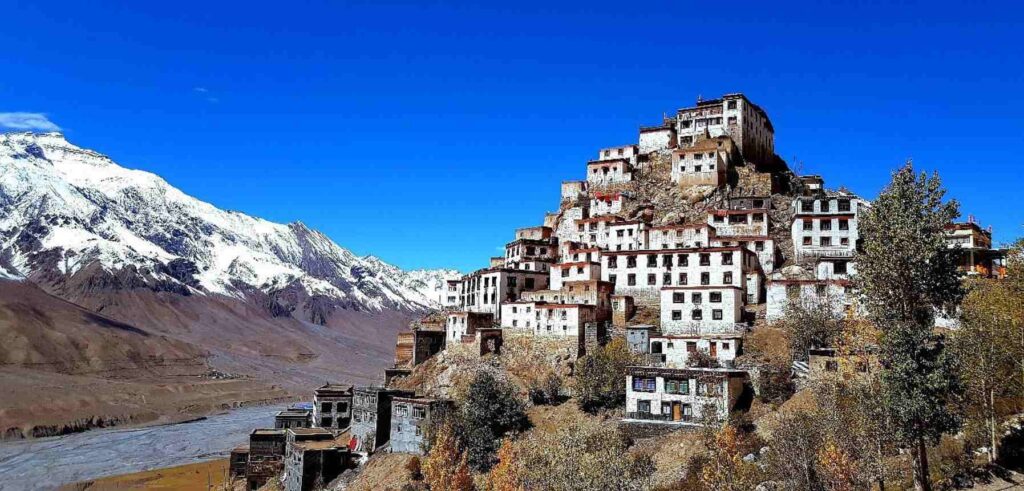
The middle country, Spiti, has its sub-divisional headquarters in Kaza. Regarding Buddhism, Dhankar possesses an intermerged culture that converges profoundly around its various monasteries. Some must-visit monasteries and places to visit in Spiti Valley include Ki, Tabo, Mud, Gungri, Lidang, Hikim, Sagnam, Mane Gogma, Giu, and many more. The Spiti flows eastward to the Sutlej while originating at the mouth of the Kunzam range. Serving in partial isolation for many decades, Spiti has cultivated its culture. Most of the citizens are a part of the Gelukpa sect, inferring that most are followers of Buddhism. For many years, Spiti was loosely ruled by a hereditary wazir, Nono.
- Best time to visit: May to September
- Nearest railway station: Joginder Nagar Railway Station
- Nearest airport: Bhuntar Airport in Kullu
Dhankar
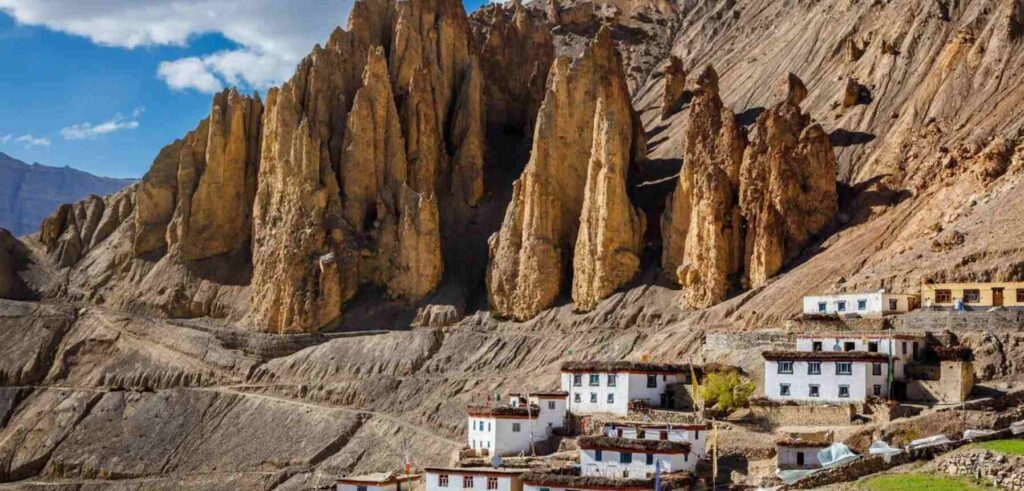
Situated at a height of 3870 meters, Dhankar lies 32 kilometers downstream from Kaza, near Shichling. This Citadel, located on an elevated district that extends into a valley terminating in a steep rock face, functions as the formal capital of Spiti. Among the places to visit in Spiti Valley, Dhankar is significant due to its historical and strategic importance. The fort’s position enabled the Spitans to monitor the surrounding battles and keep nighttime watch to inform neighboring civilizations in the summer of danger. Thus, the fort is beneficial as a watchtower headquarters.
- Best time to visit: May to September
- Nearest railway station: Joginder Nagar Railway Station
- Nearest airport: Bhuntar Airport in Kullu
Lhalung
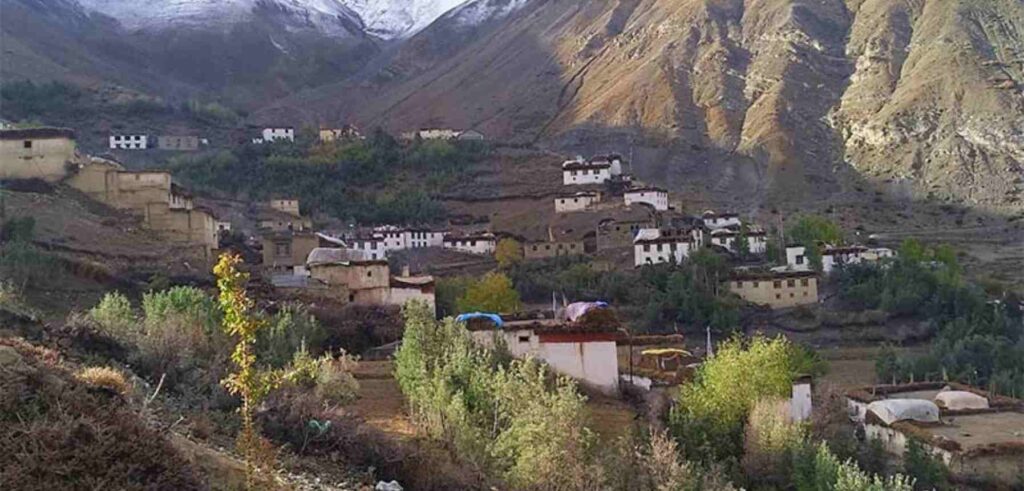
From the tiny village of Attargu, the path leads through empty, rough land over 3,800 meters into the Lingti Valley. Among the places to visit in Spiti Valley, Lingti Valley stands out for its rugged landscapes and remote beauty. After the Pin River pours its waters into Spiti, the Lingti River is the third-biggest. The road into the Lingti Valley is along the right bank of the Lingti River and is covered in loops, from which one can see the few medieval settlements along the river.
- Best time to visit: mid-May to September
- Nearest railway station: Joginder Nagar Railway Station
- Nearest airport: Bhuntar Airport in Kullu
Kunzum Pass
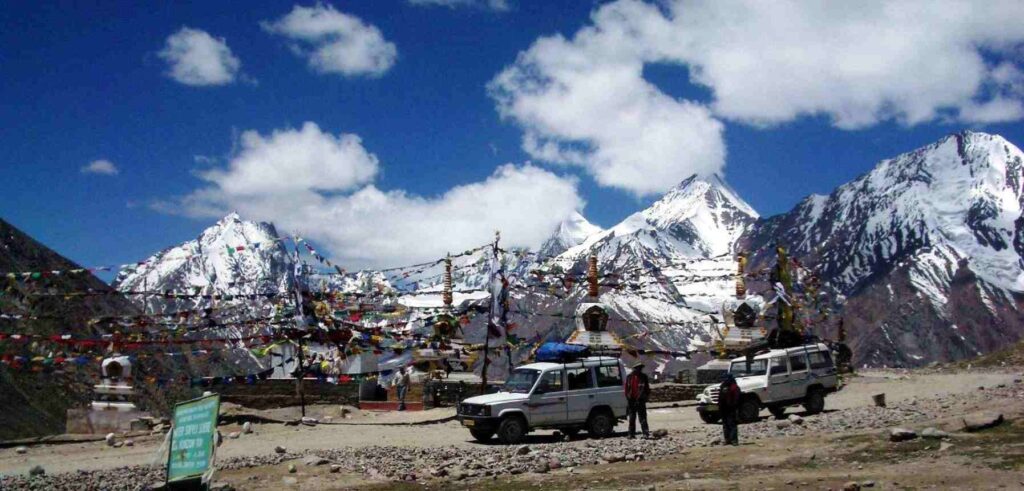
Kunzum Pass, situated at an altitude of 4,590 meters, is one of the most important places to visit in Spiti Valley. This pass is 60 kilometers from Gamphu and on the Gramphu-Kaza- Sumdo highway. It is one of the main entry points that allows access to the Spiti Valley from Lahaul. It is divided from the Spiti Valley by the Great Kunzom range and from where the area’s main river originates, the Spiti (locally pronounced Piti).
The altitude of this pass is around 4590 meters. Although Kunzum is more elevated than the Rohtang Pass, it tends to have less traffic and is easier to ascend and descend. The view from the summit of the pass is incredible. Amazing views of the majestic Shigri Parbat are seen right in front.
- Best time to visit: June to September
- Nearest railway station: Joginder Nagar Railway Station
- Nearest airport: Bhuntar Airport
Lossar
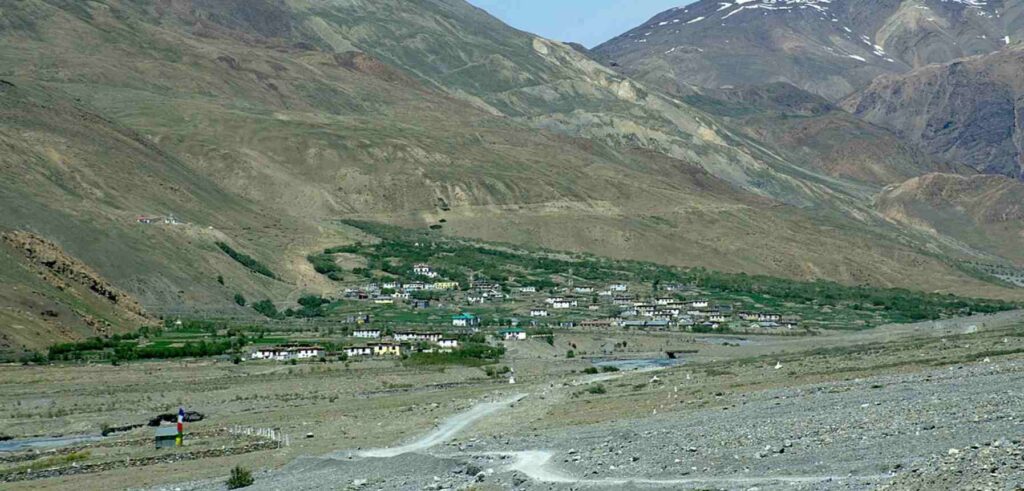
Lossar village, perched at an elevation of 4,085 meters, is one of the most scenic places to visit in Spiti Valley. The town is steep, at an elevation of 4,085 m, which makes it very remote. For a traveler descending from Kunzom, the view of Lossar is instantly comforting. The picturesque sight of the mud-white-washed houses with red bands is matched by the verdant fields and willow plantations surrounding the village.
- Best time to visit: March to June; October to November
- Nearest railway station: Joginder Nagar Railway Station
- Nearest airport: Bhuntar
Kye Monastery
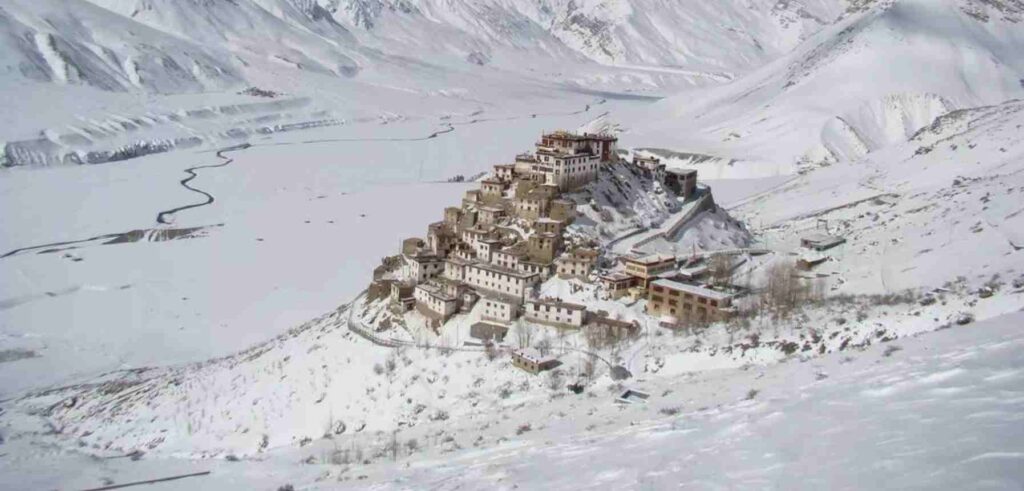
Approximately 13,500 feet above Kaza, the Kye monastery, the largest in the valley, overlooks Kaza. It is incredibly powerful and commands the most densely populated part of the valley surrounding Kaza. This gompa is a heap of low, irregularly shaped rooms on a monolithic conical hill. It resembles the Thiksey monastery near Leh in Ladakh. Frames pulse – throb – snap. It explodes in subsections, revealing loosened beauty components with dark patches, curvy stairs, and clipped doors, unlocking an out-of-the-ordinary space. A visit to Kye Monastery is a must for travelers exploring places to visit in Spiti Valley.
- Best time to visit: May to September
- Nearest railway station: Joginder Nagar Railway Station
- Nearest airport: Bhuntar Airport in Kullu
Kibber
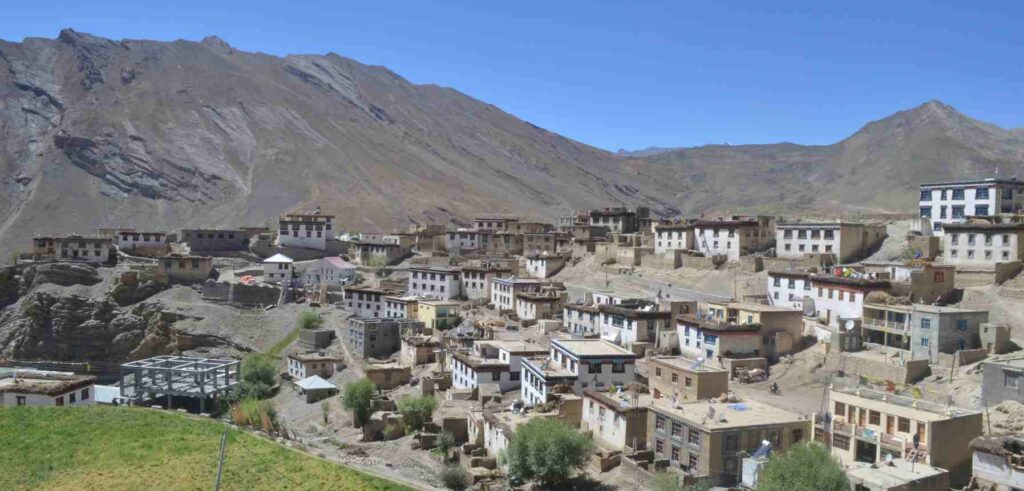
At 14,200 ft elevation, it resides in a narrow valley at the top of a limestone mountain. Kibber is home to a small but vibrant village. Cultivation is plentiful, which supports abundant growth. It is quite a pleasant village. Only 80 houses were constructed in the town. The structure shows outstanding features, such as a stone used over mud or adobe brick. When you step off the bus, you are welcomed by green fields that appear incredibly sanguine and the dry and dull backdrop of towering hills. However, at the same time, it is pretty refreshing. Kibber is undoubtedly one of the best places to visit in Spiti Valley for travelers seeking serene mountain landscapes and traditional Himalayan culture.
- Best time to visit: May to July
- Nearest railway station: Joginder Nagar Railway Station
- Nearest airport: Bhuntar Airport
Pin Valley
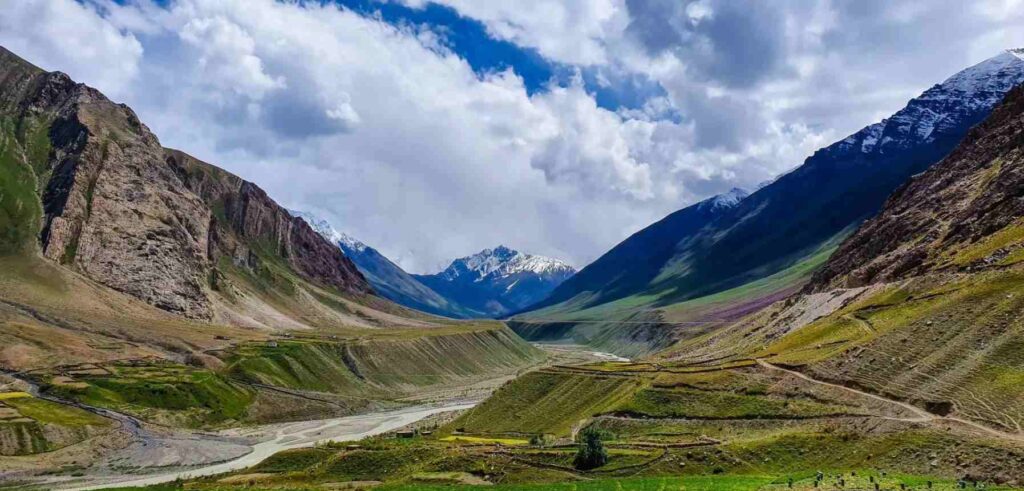
One of the must-visit places to visit in Spiti Valley, Pin Valley is one of the four local units of Spiti, situated on either side of the Pin River. Geographically, the Pin Valley is cut off from the rest of Spiti by tall mountains. The Pin River has only provided access, forcing its way through a narrow gorge to join Spiti at Attargu. The Pin Valley is famous for its internationally renowned Chaumurthi horses, which were bred and sold at high prices in Rampur-Bushahar during the Lavi fair and in Ladakh. A tourist in the Pin Valley can come across several horses, colts, and fillies nibbling on the river banks and some lads galloping on these horses, singing joyfully.
- Best time to visit: July to October
- Nearest railway station: Joginder Nagar Railway Station
- Nearest airport: Bhuntar Airport
Tabo Monastery
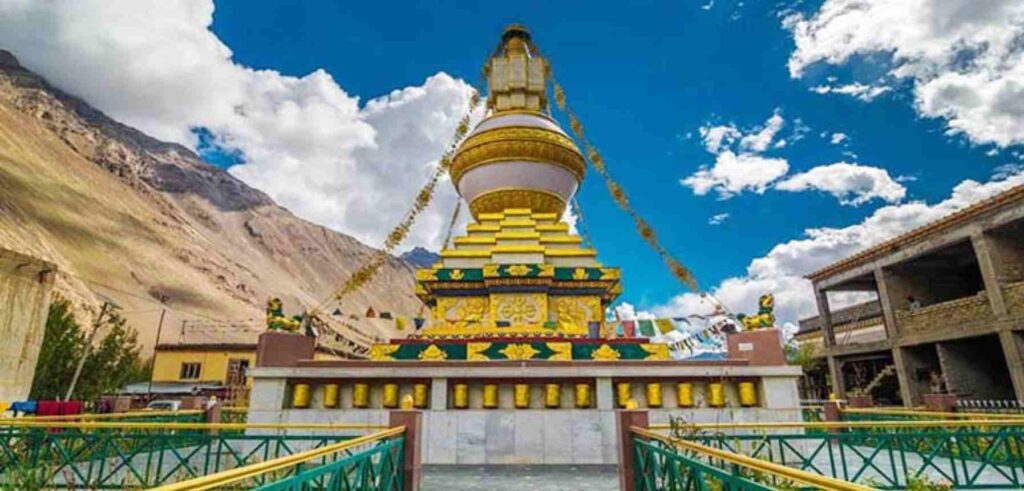
Known for its stunning artwork, Tabo Monastery is one of the oldest and most significant places to visit in Spiti Valley. Among the highlights of the monastery are the nine temples of Tara, the Temple of Buddha Maitreya, and numerous Stupas. Other important attractions are stupendous and savory wall sculptures, jaw-dropping stucco sculptures, and paintings of marvelous Bodhisattvas. Photography inside the Gompa premises is not permitted.
- Best time to visit: May to October
- Nearest railway station: Kalka Railway Station
- Nearest airport: Kullu Airport
Gandhola Monastery
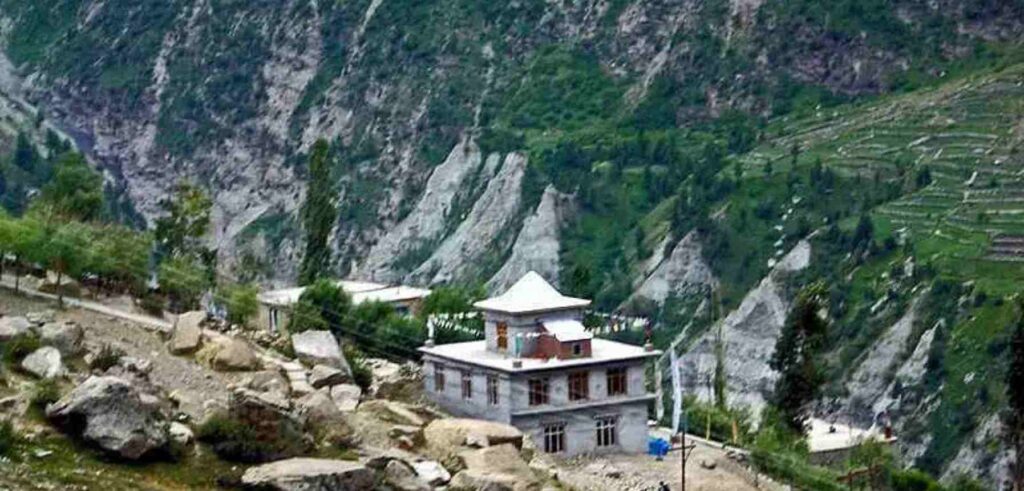
Constructed by Padma Sambhava, Gandhola Monastery is nearly 800 years old and is one of the historical places to visit in Spiti Valley. This, along with the meeting of Chandra and Bhaga Rivers, makes this monastery simple and basic yet of great historical significance. Be sure to add this spot to your itinerary when planning a trip to Spiti Valley so that you don’t miss out on this gem.
- Best time to visit: May to October
- Nearest railway station: Shimla Railway Station
- Nearest airport: Kullu Airport
Chandratal
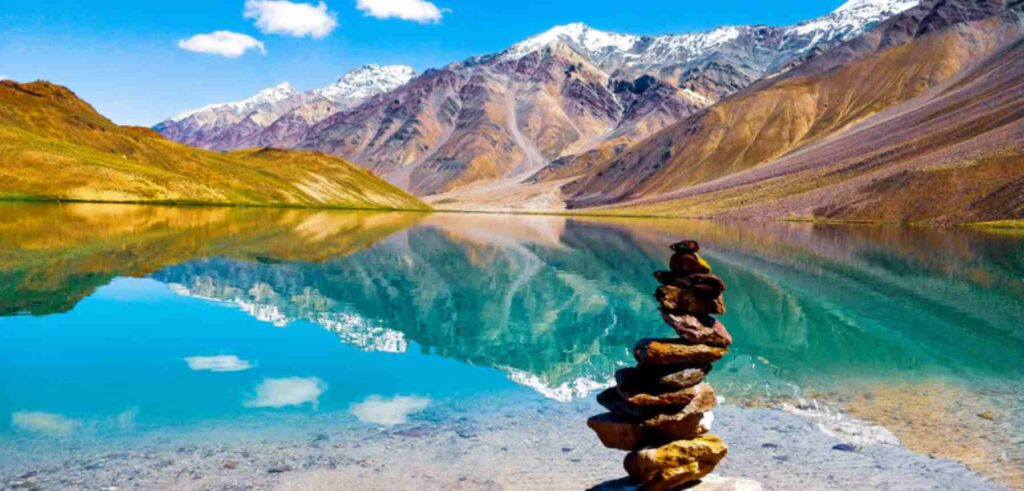
If you are inspired by nature, Chandratal is one of the most exquisite places to visit in Spiti Valley. Its name comes from a traditional folk tale, and its shape resembles a crescent moon. This Pass is a scenic wonder and an off-the-beaten-path destination every photographer likes to visit. It stands in crystal-blue waters surrounded by snow-covered mountains, making it ideal for camping and trekking.
- Best time to visit: June to September
- Nearest railway station: Joginder Nagar Railway Station
- Nearest airport: Bhuntar Airport
Suraj Tal
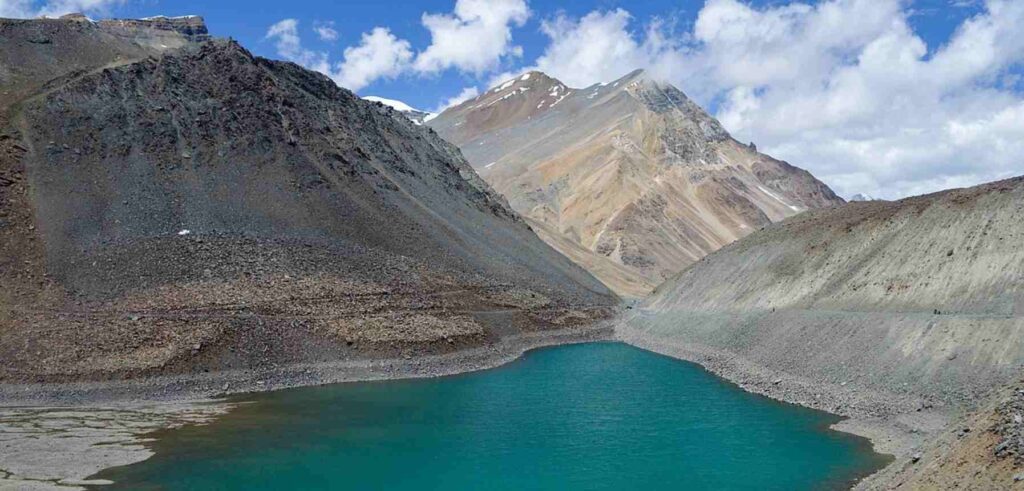
This area is famous for nature and trekking, attracting photographers and outdoor enthusiasts. Suraj Tal, or ‘The Sun Lake,’ is one of the most breathtaking places to visit in Spiti Valley. Suraj Tal, or ‘The Sun Lake,’ known for its breathtaking beauty and photographs, is one of the best places to visit in the Lahaul and Spiti region. Photogenically, this lake is unmatched and is located in Baralacha Pass, right next to it. For the best visuals, I suggest visiting this lake in the summer between May and October.
- Best time to visit: mid-May to mid-October
- Nearest railway station: Joginder Nagar Railway Station
- Nearest airport: Bhuntar Airport in Kullu
Baralacha Pass
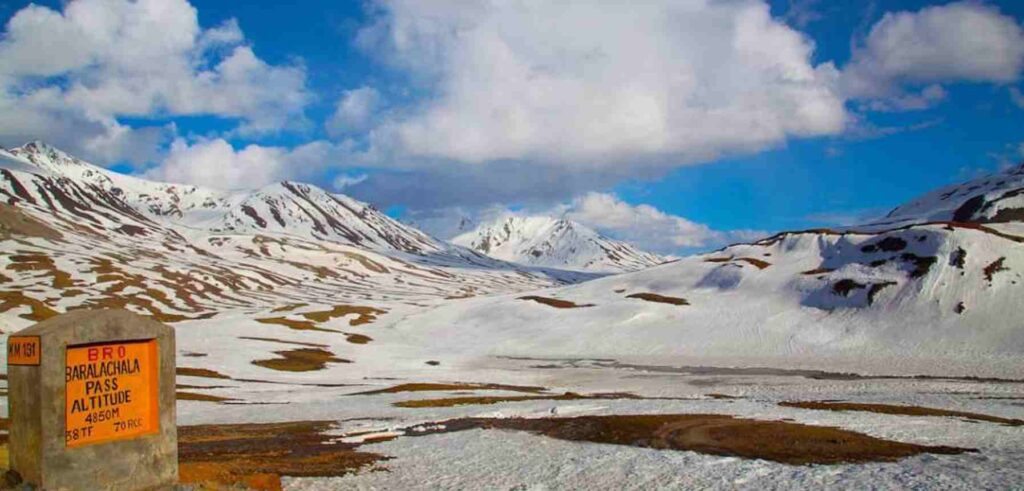
While crossing from Lahaul to Ladakh, four mountain roads are interconnected in this region. Out of all those, Baralacha is quite famous. Alongside the Manali-Leh Highway in Zanskar, it is one the most difficult routes for enthusiastic travelers. The surroundings where the Panjal and Zanskar ranges meet with the great Himalayas are ideal for river flows and valley beaches. Alongside the Bhaga and Yunam rivers, both sides create a stunning view for the passerby. As one of the most thrilling places to visit in Spiti Valley, Baralacha Pass is perfect for camping, trekking, and mountain biking, offering an unforgettable adventure.
- Best time to visit: April to October
- Nearest railway station: Joginder Nagar Railway Station
- Nearest airport: Bhuntar Airport
Safety Tips for a Hassle-Free Trip to Spiti
If you’re planning a trip, don’t miss the places to visit in Spiti Valley, such as Kaza, Chandratal Lake, Key Monastery, Tabo Monastery, Pin Valley, and Kunzum Pass. The condition of the roads in Spiti differs from that of the Manali-Leh highway. They are gravel, roughly zig-zagged onto the cliff, and don’t have streetlamps for guidance – meaning they should not be driven on at night.
- With such a mysterious beauty comes a risk that should never be ignored. As a precaution, take your ascent slowly and bring altitude sickness medicine. It is also good to know that some Diomox (acetazolamide) can be bought over the counter.
- While you prepare for a Spiti road trip, consider stopping at Chandigarh before proceeding to Reckong Peo, or as your first stop, try Rampur, which is a much quieter, cheaper, and friendlier hub and still retains some of the beautiful hill features that Shimla does!
- Undoubtedly, Spiti is cold, but every bit of that is complimented by the presence of the sun. Being at a height of over 10000 feet means you are closer to the sun than you would’ve ever dreamt of, and trust me on this: there is a lot more pep in the shine than you would’ve expected. Along with a healthy dollop of sunscreen, ensure you slather your skin with a good layer of sunscreen. Getting burned is insane and more harmful than you’d imagine.
Conclusion
Looking for the best places to visit in Spiti Valley? This breathtaking destination has stunning landscapes, ancient monasteries, and adventure-filled spots. Whether you are exploring serene lakes, rugged mountain passes, or historic sites, there are countless places to visit in Spiti Valley that offer unforgettable experiences.
If you’re wondering about places to see in Spiti Valley, don’t miss Kaza, Dhankar, and Tabo Monastery. Every corner of Spiti offers something unique, from high-altitude villages like Kibber to natural wonders like Chandratal and Kunzum Pass. For travelers seeking Spiti Valley tourist places, the region promises spectacular views, thrilling treks, and cultural immersion. With TripzyGo, you can book a Spiti group tour and have a memorable trip with your loved ones!

